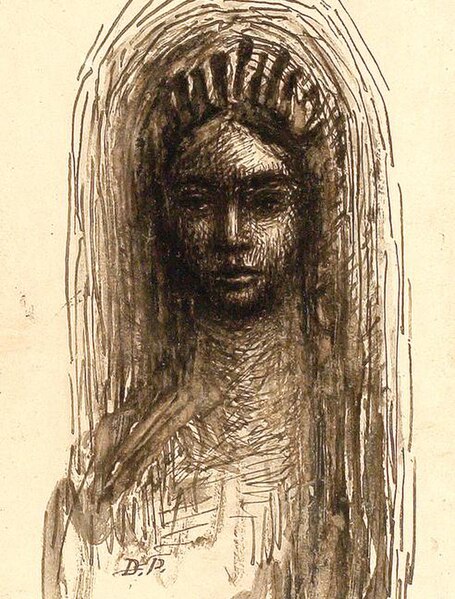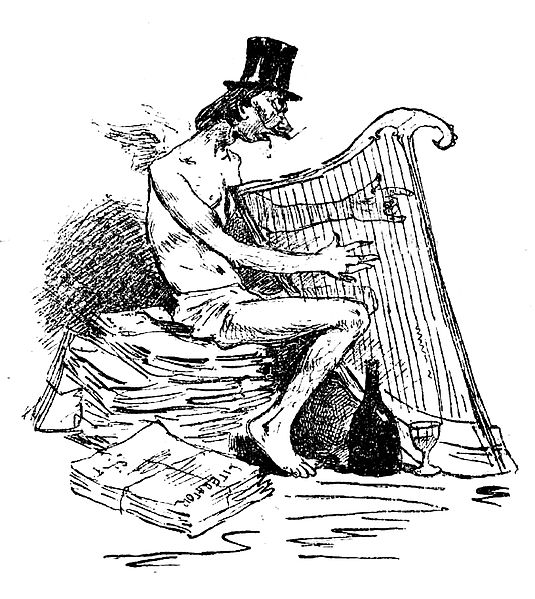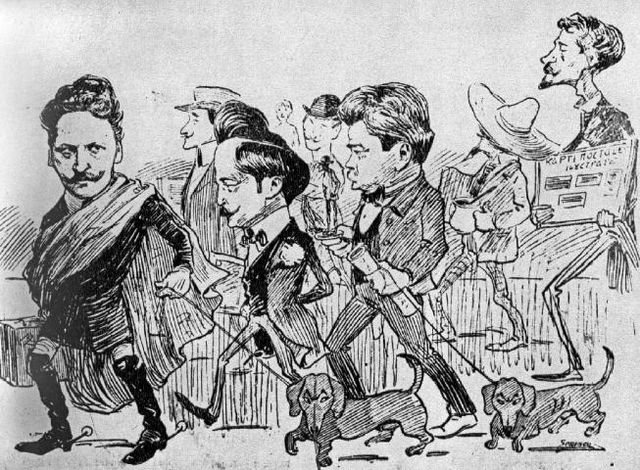Symbolist movement in Romania
The Symbolist movement in Romania, active during the late 19th and early 20th centuries, marked the development of Romanian culture in both literature and visual arts. Bringing the assimilation of France's Symbolism, Decadence and Parnassianism, it promoted a distinctly urban culture, characterized by cosmopolitanism, Francophilia and endorsement of Westernization, and was generally opposed to either rural themes or patriotic displays in art. Like its Western European counterparts, the movement stood for idealism, sentimentalism or exoticism, alongside a noted interest in spirituality and esotericism, covering on its own the ground between local Romanticism and the emerging modernism of the fin de siècle. Despite such unifying traits, Romanian Symbolism was an eclectic, factionalized and often self-contradictory current.
Chimera, ink drawing by Dimitrie Paciurea
"The Symbolist poet", as portrayed by cartoonist Constantin Jiquidi. At the bottom, a stack of papers with the title Literatorul
Some of the Tinerimea Artistică founders, in a caricature by Nicolae Petrescu-Găină (1903)
Ștefan Luchian, Primăvara ("Spring")
Romanian literature is the entirety of literature written by Romanian authors, although the term may also be used to refer to all literature written in the Romanian language or by any authors native to Romania.
Icon of Neagoe Basarab and his son Teodosie
Stamp with the Romanian Literature Museum in Chișinău
Original Manuscript of Hieroglyphic History by Dimitrie Cantemir
Vasile Alecsandri








